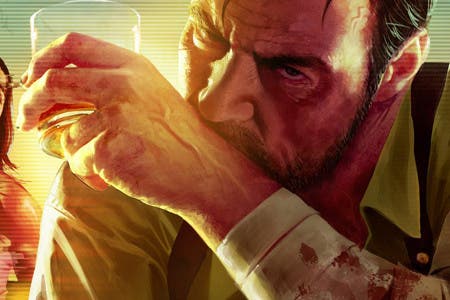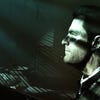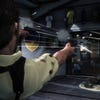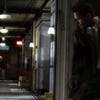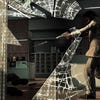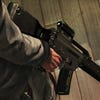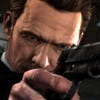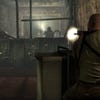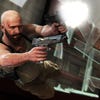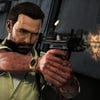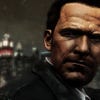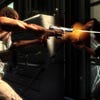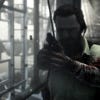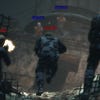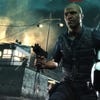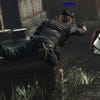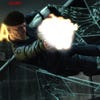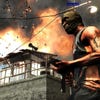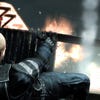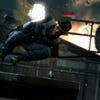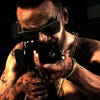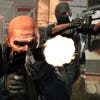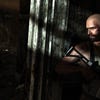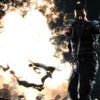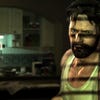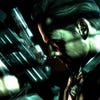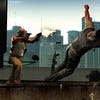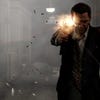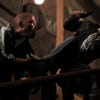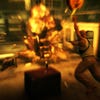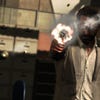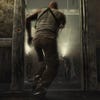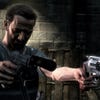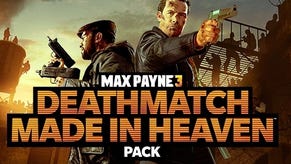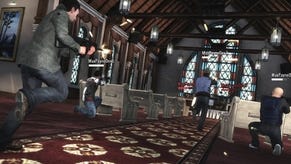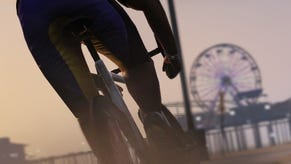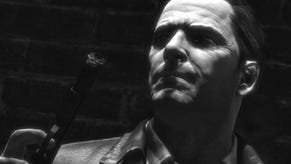Max Payne 3 Review
Out of time.
Time hasn't been kind to Max Payne, the New York cop who used to woo us - or perhaps 'Woo' us - by diving around in slow motion blasting organised crime to pieces. In one of the bleakest game intros I've ever seen, Max begins his latest adventure by arriving at his new Sao Paolo apartment, getting the shakes, then draining a bottle of bourbon, chain-smoking and smashing a photograph of his dead family against a wall in his torment. Press Start.
If Max Payne 2 was The Fall of Max Payne, then Max Payne 3 is Max at rock bottom. He starts the game in a purgatorial funk, bodyguard to a Brazilian industrialist and his family of rich playboys and politicians, drinking his way through the days - the end of chapter one sees him lurching around his apartment, throwing up in the kitchen sink and then crying himself to sleep - while we listen along to his internal monologue. Poor old Max.
For a while though, it seems as though time has been surprisingly kind to Max Payne, the third-person shooter with Bullet Time that first graced our screens in 2001. It hasn't changed much since then, even with the transition from Remedy to new developer Rockstar Vancouver, and when paramilitaries start violently abducting Max's employers that turns out to be just fine. Max may have piled on the pounds and lost his self-respect, but his iconic Shoot Dodge hasn't aged badly at all.
Tooled up with a pair of pistols or Uzis and faced with a room full of enemies, Max can throw himself out of cover in slow motion, diving through the air and nailing his adversaries one by one. When life snaps back to normal speed, they all fall down. (And if for some reason they haven't, Max can lie there on the floor, twisting around as you swivel your gun-sights, firing away until you drag him back to his feet.)
Max Payne 3 is at its best when Rockstar contrives interesting Shoot Dodge scenarios, which usually involve jumping off something, like a balcony or a ramp, so that Max can hang in the air longer and puncture more enemies. My favourite is the sequence early on where Max is downing scotch in a nightclub VIP lounge when paramilitaries appear out of nowhere and snatch his boss's wife. With no hesitation, Max bulls the nearest guy backwards through the glass wall overlooking the dance floor, and then soars through the smoky air, firing all the way down and using the bad guy to cushion his landing.
Max can also slow down time without diving around, using up his rechargeable Bullet Time meter in the process, and the health system is also familiar - a grey silhouette of Max that fills up with blood until you pop some painkillers. One change is that Max can now snap to cover, and this becomes more important later in the game as you move through car parks, offices, docks, hotels and alleyways swimming with enemies who won't go down easily.

Most of the time, then, this is very much the Max Payne we last played in late 2003, but while that means we get to enjoy Shoot Dodge again for a while, ultimately the nostalgia wears off and the familiarity goes against the game more than it works in its favour.
The biggest difference is that now we're in more expensively assembled car parks, offices, docks, hotels and alleyways, infused with the sort of fine-grain environmental detail we've come to expect from Rockstar's worlds. A slow walk through a Sao Paolo favela halfway through the game is almost on a par with Uncharted 2's stroll through a Tibetan village; as Max prowls the alleys in a bad Hawaiian shirt, street kids play football on a rundown basketball court, startled mothers rush to close wooden shutters, and gang members stalk the player's shadows with AK-47s.
"After a few respawns, the game gives you some extra painkillers, suggesting even Rockstar realised its game wasn't perfectly weighted. So why not fix it?"
But all this polish can only sustain your enjoyment for so long when it's punctuated by such repetitive and increasingly frustrating combat. Even on the regular difficulty setting, using Shoot Dodge - the most entertaining thing about being Max Payne - soon becomes impractical due to the weight of enemy numbers and their pinpoint accuracy. We've learned to cope with the occasional balancing issue in a vast Grand Theft Auto game, but the difficulty spikes and checkpointing mistakes in Max Payne 3 betray Rockstar's lack of experience in pure third-person shooters. After a few respawns, the game gives you some extra painkillers, suggesting even Rockstar realised its game wasn't perfectly weighted. So why not fix it?
Little niggles quickly start to pile up, too. When cut-scenes finish, the game switches you back to a single pistol, forcing you to fumble with the inventory every time you retake control. Enemies hurl grenades in your direction to force you out of cover, but you don't get grenades of your own. And enemies take far too many bullets to go down. You can understand them getting back to their feet in body armour - however annoying it is - but when they're wearing shorts and a T-shirt?
One success is Rockstar's decision to stop telling the story using graphic novel panels and bring in cut-scenes and interactive sequences instead. You can understand why: the developers now have the technology and budget to do aerial shots of Sao Paolo from a helicopter, or to let you stumble after your partner Passos through the guts of a football stadium while you nurse a gunshot wound and he beats up and disarms your enemies. It's more immersive, more spectacular and, of course, more Rockstar, although the overuse of split-screen is a bit, "Hey, I went to film school!"
And, whether they admit to it or not, it wouldn't be a Rockstar game without some gratuitous violence to wind up the politicians. For them we have super slow-motion deaths that come at the end of a sequence of enemies, or whenever you take a critical hit. These allow you to fire repeatedly at a stricken adversary and watch in gory close-up as your bullets cut through their eyes, cheeks, nose and mouth. In their (limited) defence, you're so annoyed with the game by the latter stages that this acts as welcome stress relief - albeit at the cost of wasting vital ammunition.
Elsewhere, multiplayer has a bunch of decent ideas, like a Gang Wars mode that feeds back into the campaign to some extent, and the way Shoot Dodge is implemented so that it traps you and your line-of-sight target in a brief window of slow motion, but otherwise it's all fairly predictable: perks, XP, custom loadouts, revenge kills, and tweaked versions of capture-and-hold, deathmatch, capture-the-flag and other common modes. If you like this stuff in other games and get on well enough with Max Payne 3's third-person shooting, this is perfectly fine, but it feels more like Rockstar trying to stop you trading the game in once you're finished than anything else.
If anything's going to stop you trading in Max Payne 3, though, then it's more likely to be Max himself. "He was as slick as an oil spill on an iceberg and about as toxic." "I didn't know what to think any more - this town had more smoke and mirrors than a strip-club locker room." "I had a hole in my second-favourite drinking arm." You empty rooms together, then Max makes the empty rooms interesting with his tired, cynical, self-deprecating, cheesy and often drunken monologue. It all makes him hard not to like.
He's just not as well-served by the game around him as he used to be. At one point you're in a New Jersey flashback and Max is fleeing the mob when he's interrupted by a neighbour, a bearded anarchist in his underwear, who joins in on your side. It's a little burst of the unexpected, a glimpse of the world going on outside of your crosshairs, and as you pick through his apartment afterwards, sifting through newspaper clippings and half-built bombs, you're reminded that Max Payne used to have a lot of that. Max Payne 3 has flashes of it - a football player gunned down in a nightclub pops up in a memorial a few levels later - but not really enough.
What it has in abundance, though, is expensive-looking environments for Max to dive around in and then talk to himself, and that's just about enough to keep you going for as long as it takes to settle the score. All the same, you can't escape the feeling that Rockstar just isn't as good at a pure third-person shooter as it is with the open worlds of Grand Theft Auto or Red Dead Redemption, and in this linear context it's much harder to put up with its usual missteps in mechanics and difficulty.
Max the man emerges with credit from Max Payne 3, then, but time hasn't been kind to the ropier elements of the game he stars in.
